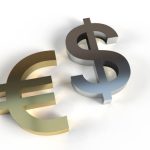JPY is still in a good position to gain more strength. After Friday’s erratic trading, the USDJPY began to rise early Monday. But according to MUFG Bank. The Yield-Curve-Control is still scheduled to end, and upward pressure on the Yen will continue.
JPY banks on YCC. Will it still end?
We believe that Ueda’s selection as Governor and the expectation of increased JGB yields are at least somewhat priced into the forex markets. If verified, this anticipation won’t change, and there’s a chance it might even reinforce it. But in terms of the direction of monetary policy in the year. We do not definitely regard the selection of Ueda as being very different from Amamiya.
The USDJPY has moved higher in trading today as traders worry less about the expected new BOJ Governor Kazuo Ueda’s likely policy tilt. The view is he will maintain the ultra-loose policy of his predecessor Kuroda.
Looking at the 4-hour chart shows, the price has extended up toward the swing area between 132.708 and 132.902. The 50% midpoint of the move down from the December 2022 high. Which is also just below that level at 132.689. The high price has reached 132.83 so far.
JPY declines against the dollar as U.S. yields rise US CPI
In comparison to important rivals, the greenback was testing a 5 high on Monday. Especially rising against the rate-sensitive Japanese yen. Trader forecasts that the Federal Reserve will maintain its restrictive monetary policy for longer drove up U.S. yields.
The main event of the week, the release of U.S. consumer price information on Tuesday. Which loomed over Monday trading, will either contradict or confirm such views.
The dollar increased by nearly as 1percent to 132.76 yen, approaching the previous week’s high of 132.9, the highest point until January 6.
In Asian trading, the euro fell to a one-month bottom of $1.0656 but last traded at $1.0693. Gaining 0.15%. The British pound increased 0.3 percent to $1.2096. Maintaining its proximity to the $1.1961 one-month low set the week before.
The dollar index, which compares the value of the dollar to that of six key competitors, is now at 103.55. Where it was earlier when it was almost at the month’s high of 103.9 last week.
The stronger U.S. yields were a significant factor in the weaker yen. The 2-year yield reached its highest point since late November at 4.543%. Also, the benchmark 10-year U.S. government yield touched a new six-week top of 3.755%.
The US yields are a major factor.
After experiencing major volatility this past week as it became clear. That the dovish Amamiya would not be the nominee to succeed Kuroda as head of the BoJ. So, after his departure in April, the faltering yen is likely to be rolled back lower due to the increasing U.S. yield influence, taking the dollar-yen back above 132.00.
A 32-year bottom of 151.94 yen to the greenback was reached by the Japanese yen this past year. As U.S. rates increased and Japanese rates remained at or around zero.
This has made gains this year as U.S. interest rates appeared to be approaching their top and on anticipation that the Bank of Japan will abandon its ultra-loose policy – Though both now appear to occur later than had been anticipated.
Kazuo Ueda is expected to take over as governor
Kazuo Ueda, a former member of the Bank of Japan panel, is expected to take over as governor .According to reports on Friday. The same day, Ueda stated in an interview that it was reasonable for the BOJ to continue including its present ultra-easy policies.
According to Naka Matsuzawa, chief strategist at Nomura in Tokyo, “markets are beginning to comprehend that the incoming governor won’t be as aggressive as (investors) initially expected.”
The economy appears to be doing well in the United States. According to considerably stronger jobs data issued at the beginning of February, which means there is less risk for the Fed to maintain high-interest rates.
US CPI data is critical
Because of this, The US CPI is one of the most crucial events in recent memory-according to a note from analysts at Barclays.
The US job market resilience has helped the greenback gain ground, but on Tuesday, the story will be updated once more.
Compared to the present inflation target of 4.5–4.75%. The money markets are expecting U.S. interest rates to peak at just below 5.2% in July. However, they have largely scaled back expectations of significant rate decreases later in the year.
Clarity probably won’t appear overnight
Clarity is not going to appear suddenly, even with the new BoJ governor in place. No seasoned central banker would abruptly change the direction of monetary policy or any other key approach.
The response of the bond as well as currency markets might be too upsetting. We believe we should anticipate that the BoJ’s attitude will become more certain over time.
We believe that the expected USDJPY volatilities reflect dubious market sentiment. This overly optimistic prediction that all will be obvious in the very short term.
Also, that JPY volatility would reduce is due to the fact that this overly optimistic prediction. This will be obvious in the very near future and also that JPY volatility would reduce is based on this fact









